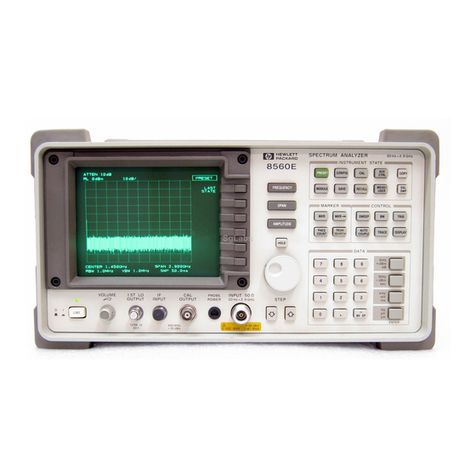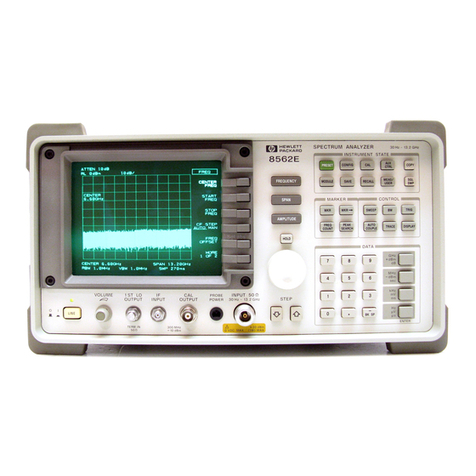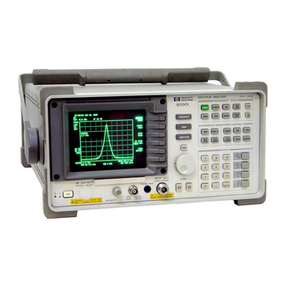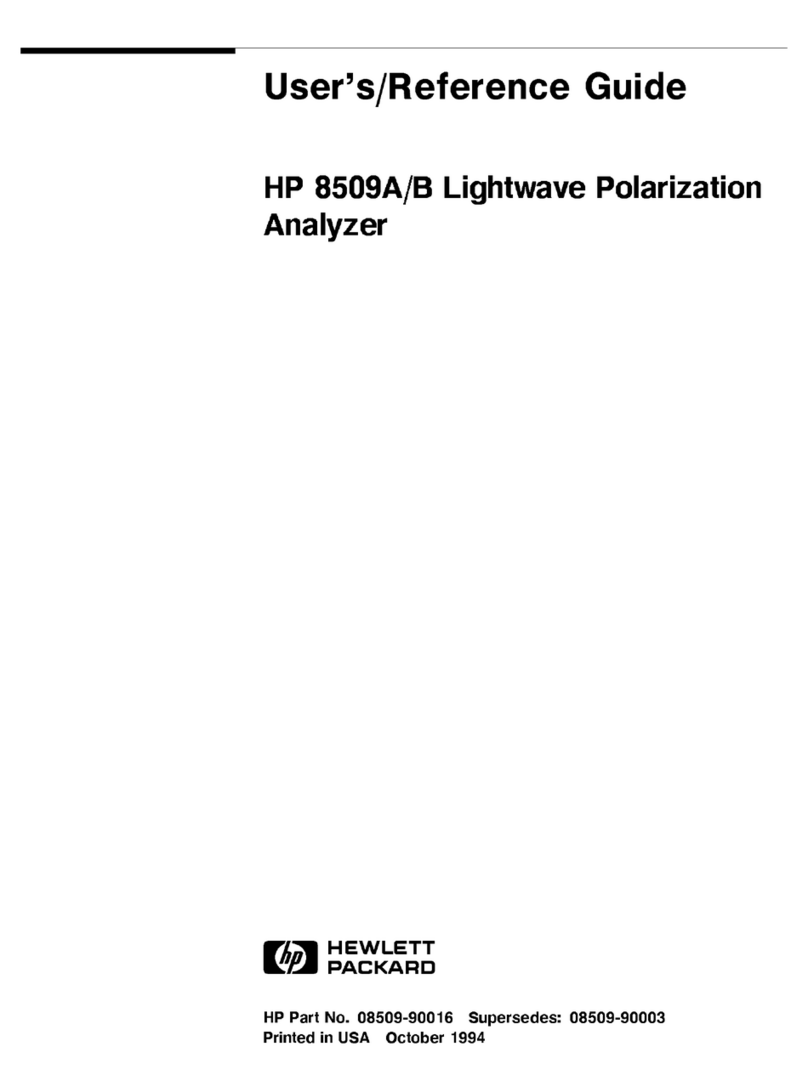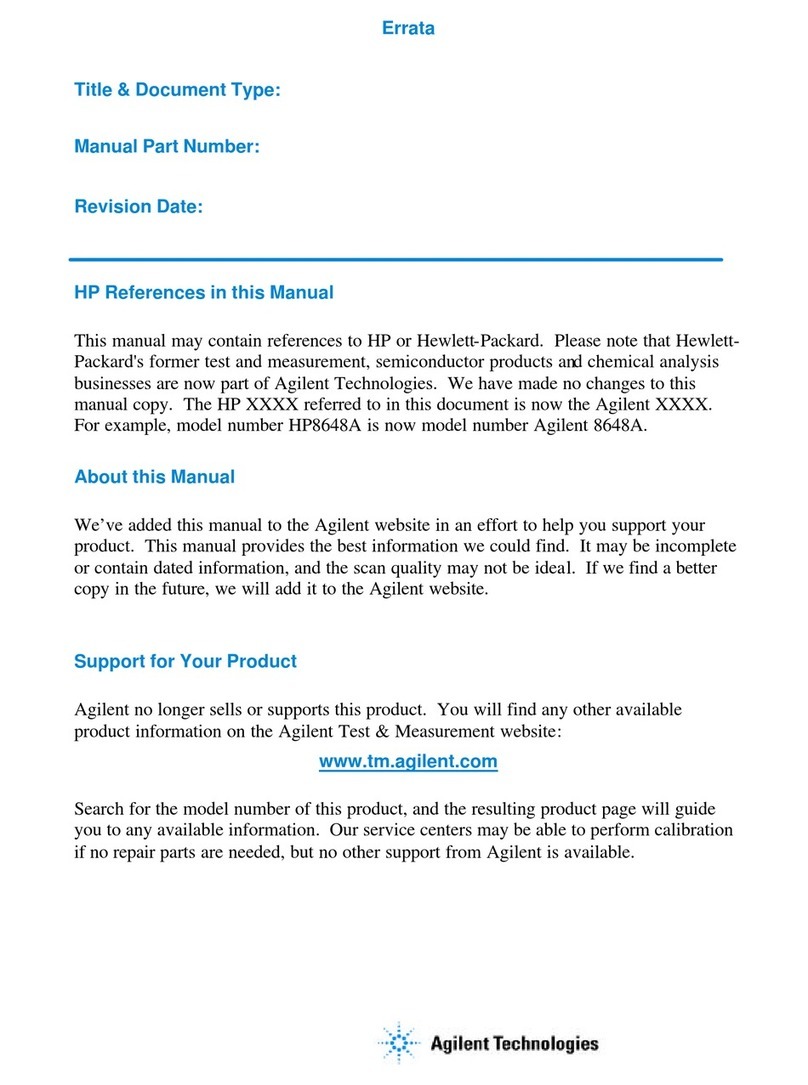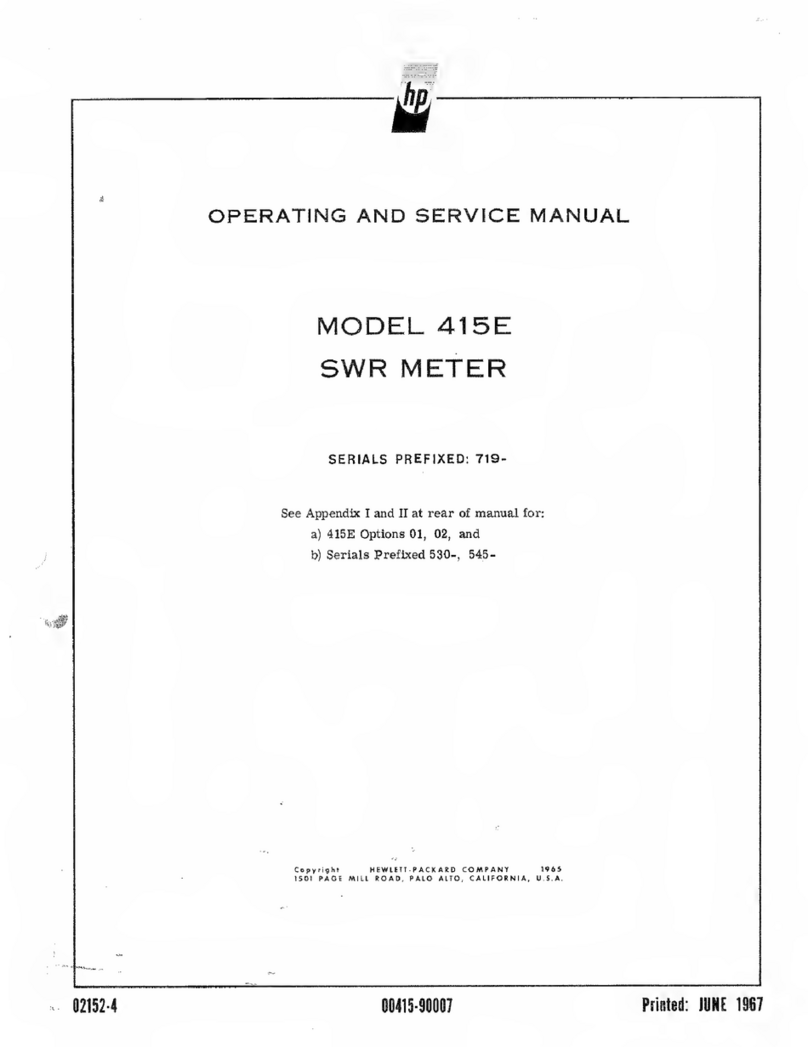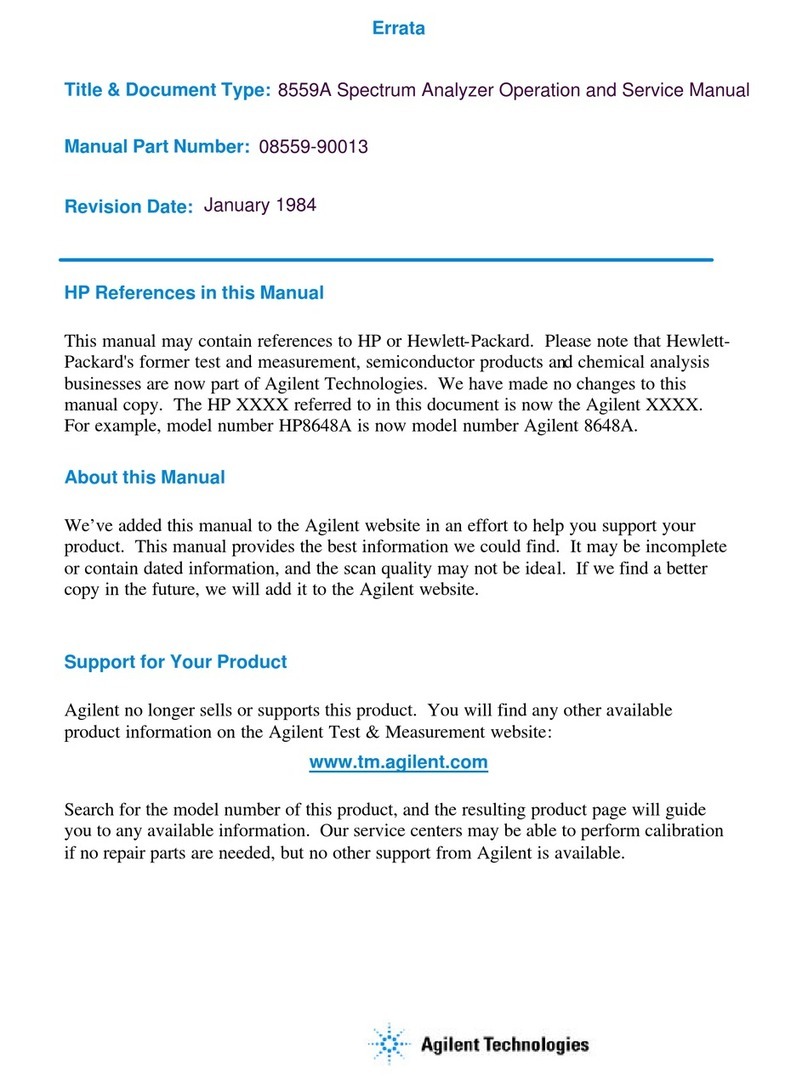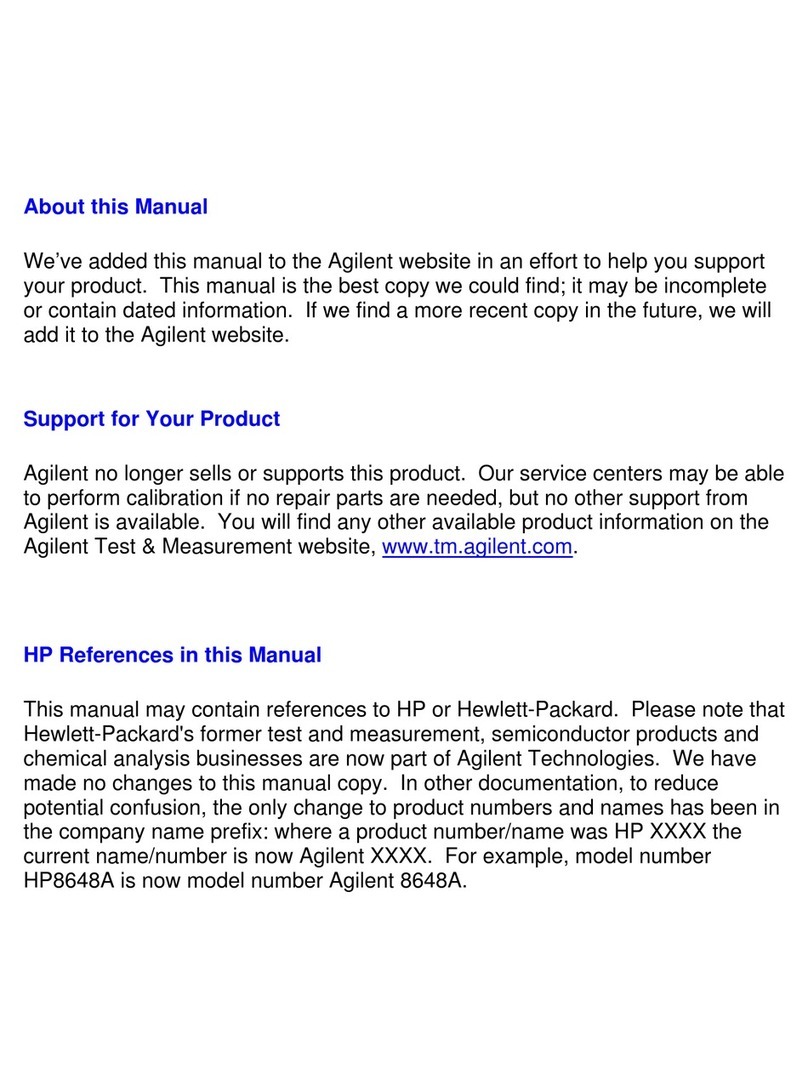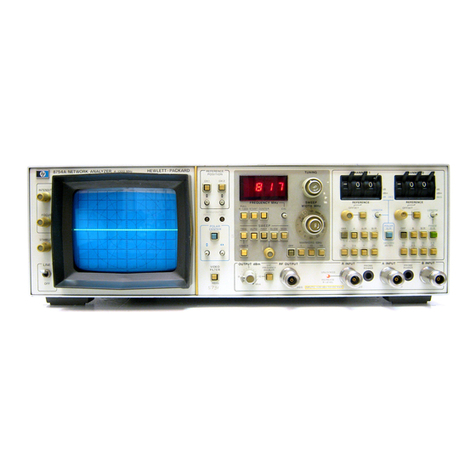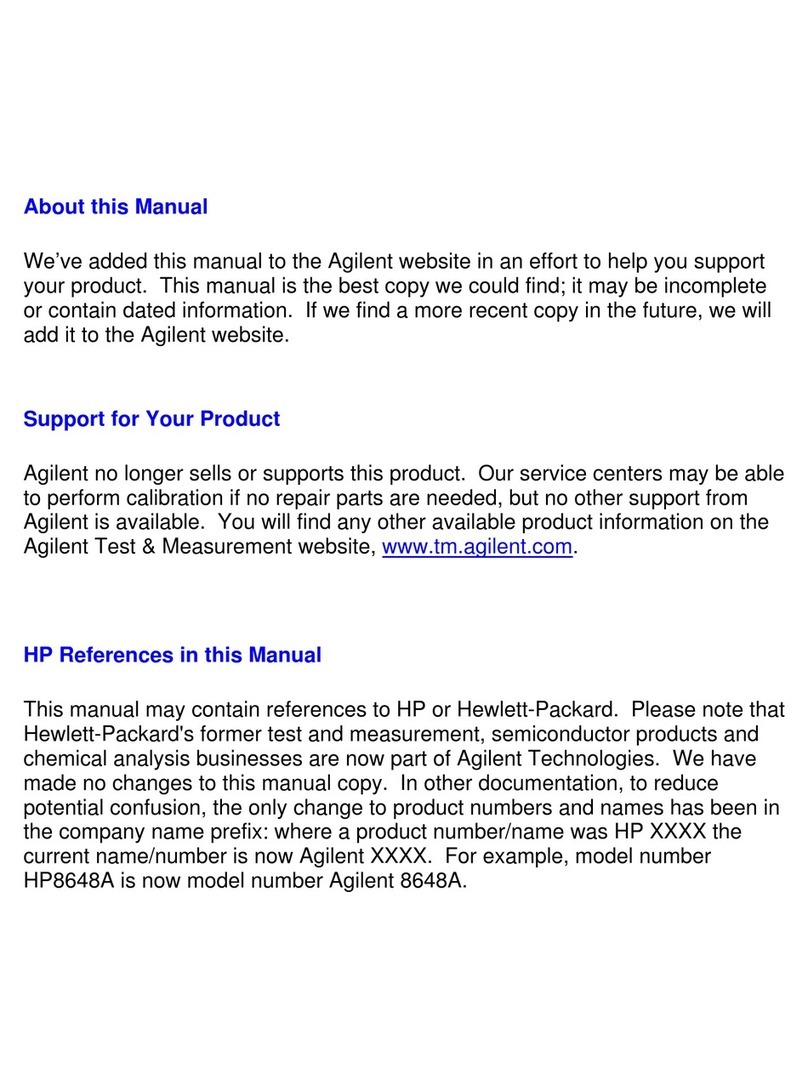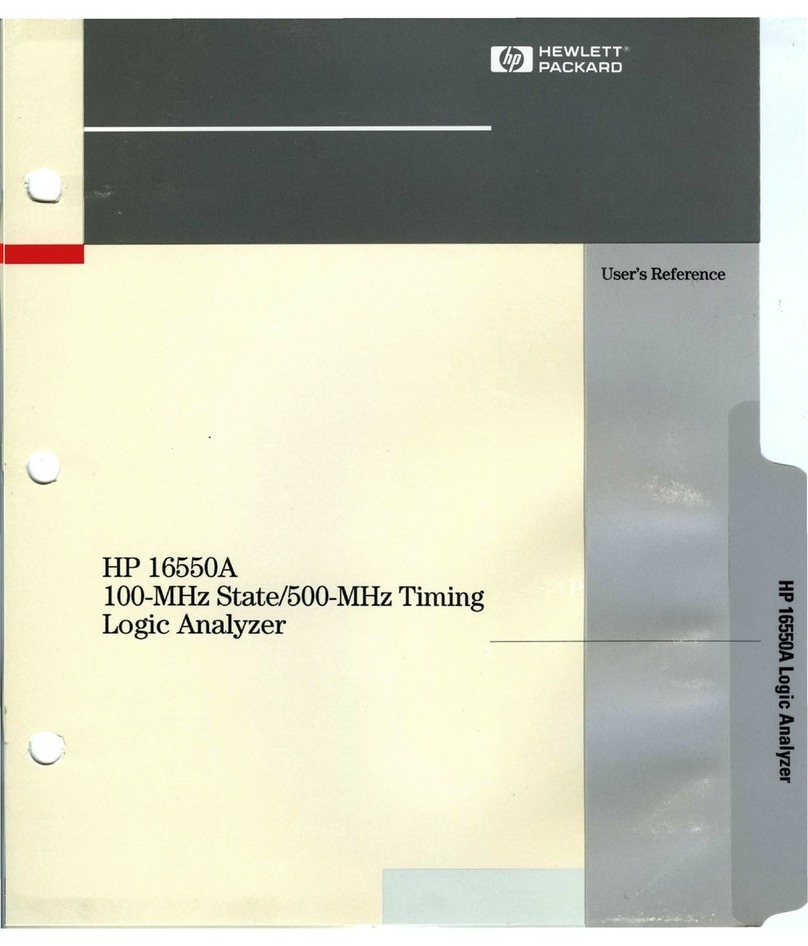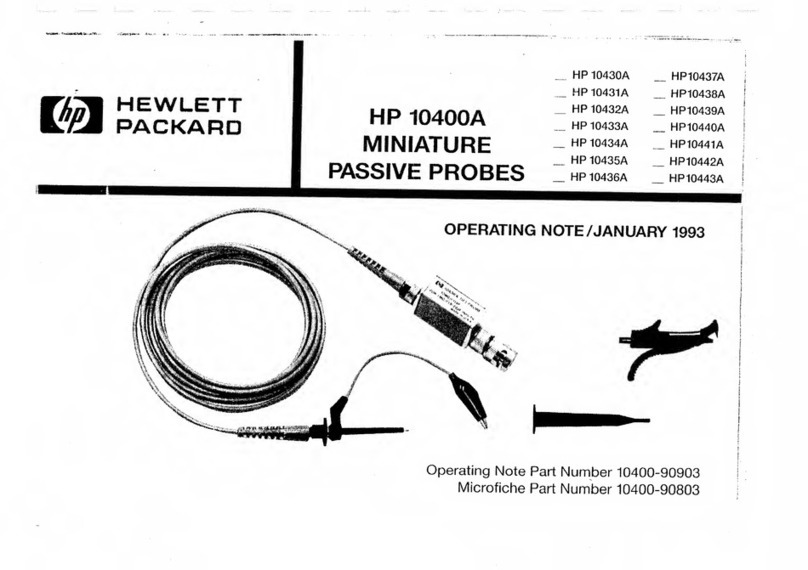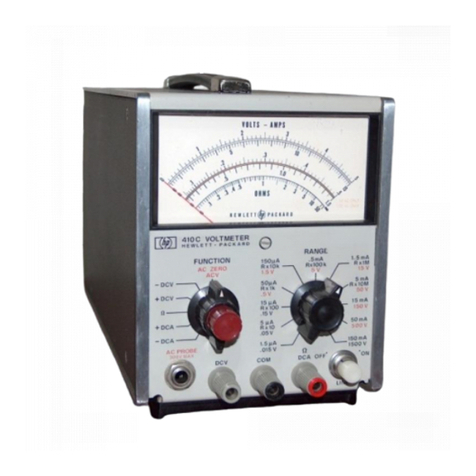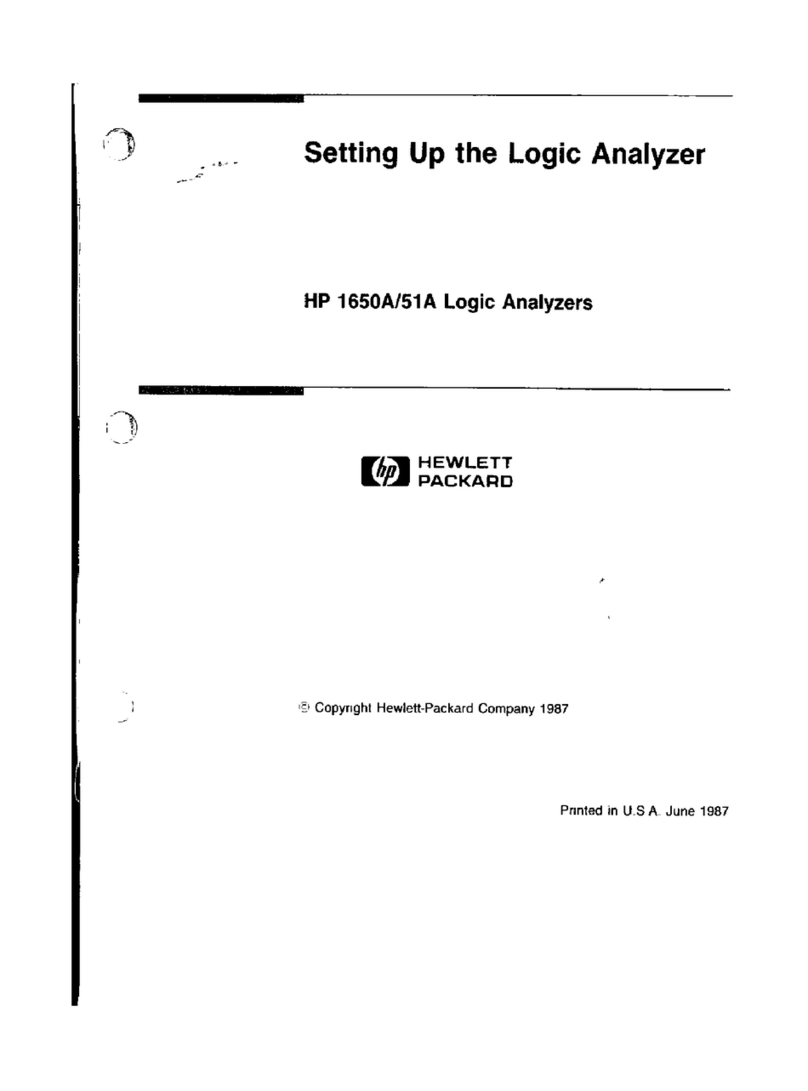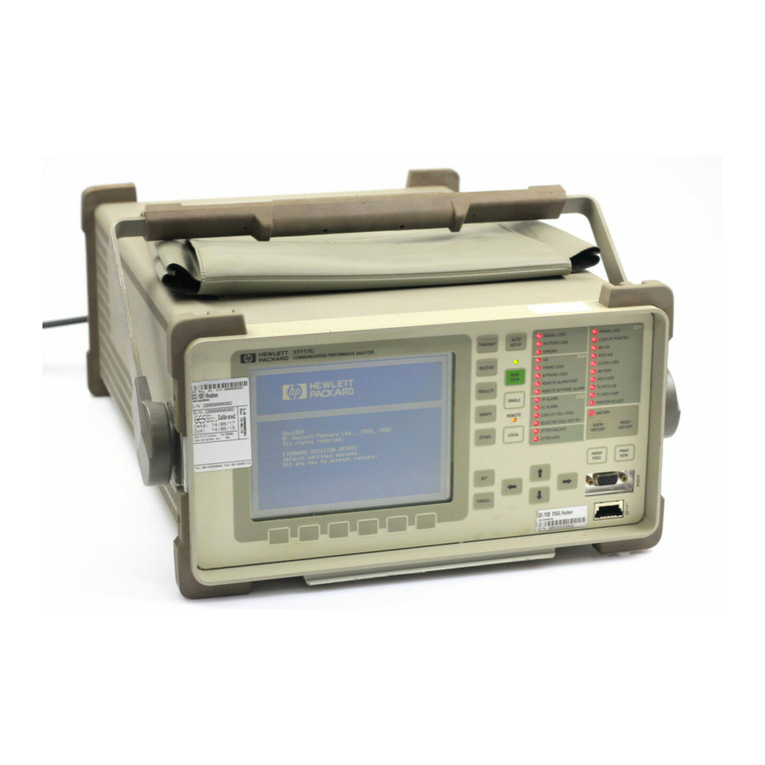Model 3400A Section II
SECTION II
INSTALLATION
2-1. INTRODUCTION.
2-2. This section contains information and instructions
necessary for installation and shipping of the-hp- Model
3400A RMS Voltmeter. Included are initial inspection
procedures, power requirements, installation infor-
mation, and instructions for repackaging for shipment.
2-3. INITIAL INSPECTION.
2-4. The -hp-Model 3400A RMS Voltmeter received a
careful mechanical and electrical inspection before
shipment. As soon as the Model 3400A is received,
verify that the contents are intact and as ordered.
Although the instrument should be free of mars and
scratches and in perfect electrical condition, it should
be inspected for any physical damge which may have
been incurred in transit. Also test the electrical
performance of the instrument using the procedures
given in paragraph 5- 5.If any physical damage or
electrical deficiency is found, refer to the warranty
on the inside front cover of this manual. Should
shipping of the instrument become necessary, refer
to paragraph 2-14 for repackaging and shipping
instructions.
2-5. POWER REQUIREMENTS.
2-6. The Model 3400A can be operated from any ac
source of 115- or 230- volts (±10%), at 48 to 440 cycles.
With the instrument disconnected from the ac power
source, move the slide switch (located on the rear
panel) until the desired line voltage value appears.
The ac line fuse is a0. 25 amp, fast blow type for 115-
or 230-volt operation. Power dissipation is approxi-
mately 7watts.
2-7. The Model 3400A is equipped with athree-prong
power cord. To protect operating personnel, it is
necessary to preserve the grounding feature of this
plug when using atwo contact ac outlet. Use athree-
prong to two-prong adapter and connect the green
pigtail lead on the adapter to ground.
2-8. INSTALLATION.
2-9. The Model 3400A is asubmodular unit suitable
for bench top use. However, when used in combination
with other submodular units it can be bench and/or
rack mounted. The -hp- combining case and adapter
frame are designed for this purpose.
2-10. COMBINING CASE (-hp- Models 1051A or 1052A).
2-11. The combining case is afull-module unit which
accepts various combinations of submodular units.
Being afull-module unit, it can be bench or rack
mounted and is analogous to any full-module instru-
ment.
2-12. ADAPTER FRAME (-hp- Part No.5060-0797).
2-13. The adapter frame is a rack frame that accepts
any combination of submodular units. It can be rack
mounted only. For additional information, address
inquiries to your -hp- Sales and Service Office. (See
Appendix Bfor office location.
)
2-14. REPACKAGING FOR SHIPMENT.
2-15. The following paragraphs contain ageneral
guide for repackaging for shipment. Refer to para-
graph 2-16 if the original container is to be used;2-17
if it is not. If you have any questions, contact your
local -hp- Sales and Service Office.
•NOTE-
If the instrument is to be shipped to
Hewlett-Packard for service or
repair, attach a tag to the instrument
identifying the owner and indicate the
service or repair to be accomplished;
include the model number and full
serial number of the instrument. In
any correspondence, identify the
instrument by model number, serial
number, and serial number prefix.
2-16. If original container is to be used, proceedas
follows:
a. Place instrument in original container if avail-
able. If original container is not available, one
can be purchased from your nearest -hp- Sales and
Service Office.
b. Ensure that the container is well sealed with
strong tape or metal bands.
2-17. If original container is not to be used, pro-
ceed as follows:
a. Wrap instrument in heavy paper or plastic
before placing in an inner container.
b. Use packing material around all sides of
instrument and protect panel face with cardboard
strips.
c. Place instrument and inner container in a
heavy carton or wooden box and seal with strong
tape or metal bands.
d. Mark shipping container with "DELICATE
INSTRUMENT, ""FRAGILE, "etc.
2-1













